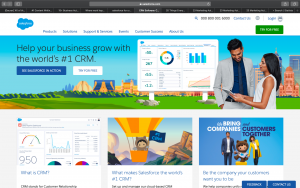— July 30, 2018

Frantichek / Pixabay
Effective training and development programs can greatly benefit an organization, leading to higher levels of employee engagement and reduced turnover rates. Although these programs have historically been among the first items to be cut in difficult times, training budgets have been on the rise for several years. Many of today’s companies are seeing the value of investing in blended learning techniques such as webinars, online assessments, and e-learning software as well as more traditional training methods.
A good training program offers a number of advantages to organizations seeking to boost their employee development and groom the next generation of leadership candidates. Here are just a few ways in which these programs can benefit companies willing to invest resources in training.
Measurable Results
One of the major advantages of a training program is its ability to provide measurable results. For human resource departments fighting to secure support and funding for leadership development, being able to point to clear returns on investment is hugely beneficial. Performance metrics also help to improve these programs by highlighting what aspects of the training are working and which areas need improvement.
Of course, it’s not always easy to measure a corporate training program’s success. Assessment is most effective in programs that have a clear goal. If employee productivity is quantifiable, then measuring whether or not their performance improves after completing the training can be an indication of the program’s effectiveness.
Leadership, however, can be difficult to quantify. While a team’s overall performance can be used as a metric, this usually isn’t enough to provide a full picture. Collecting qualitative data using techniques such as 360 degree feedback can provide organizations with a comprehensive view of how well their leaders are performing. Implementing ongoing assessments provides critical data points for measuring how much of an impact training programs have on leadership performance over time.
Continuous Learning
Leadership development should never be considered a one-time event. Although organizations are spending more than ever on training efforts, the average employee only devotes about 1% of their time to professional development. Even worse, only about 12% of learners report actually using what they learned in training on the job. The challenge, then, is to deliver relevant training programs to employees at the right time, giving them the opportunity to absorb the material and utilize it back on the job. These efforts also need to be followed up by activities that both reinforce the training and show how it can be applied in practice, not just in theory.
Many organizations have tried to meet this challenge by developing e-learning tools that provide employees with some control over what training programs they complete and allow them to progress at their own pace. When employees have the ability to access training resources when they need to address a specific situation, they’re more likely to retain the information they’ve learned and apply it immediately. Breaking these programs up into smaller, “micro-learning” modules also makes it easier for employees to complete them and measure consistent progress over time.
Engagement Through Gamification
With the advent of e-learning resources, many organizations are redefining their training programs by introducing gamification elements. These programs take the core concepts of games, specifically the reward mechanisms, and apply them to instructional courses focused on building up job-related skills.
Games are naturally engaging, and a well-implemented approach to game-oriented training should make learning more interactive and fun. For many employees, especially younger ones who have grown up playing games, the incentive structure of games makes it easier for them to absorb information and apply it to the appropriate situations. Games also allow employees to practice using skills they might not have the opportunity to use frequently.
While this approach may sound ideal, it is difficult to implement effectively. A gamification plan requires extensive research to ensure that it rewards learning in measurable ways and will appeal to all employees, even those who don’t normally express an interest in games. If the game design isn’t engaging or fun, employees might end up regarding it as little more than another rote task to be completed and forgotten.
Innovative Methods For New Insights
The multi-faceted nature of corporate training programs often creates the flexibility for experimentation. While there are many good reasons for training programs to be designed around delivering measurable results, some organizations have experimented with less formalized development strategies in an effort to build up soft-skills and relationship-oriented capabilities in their leadership candidates.
One interesting example of this approach is organizing a company-wide reading group. Assigned reading isn’t uncommon in many organizations, but very often these assignments emphasize traditional business or leadership-oriented non-fiction books. Taking the time to read and discuss classic works of literature or philosophy that grapple with fundamental qualities and questions of the human condition can provide unique insights into how people can overcome challenges, build trust, and lead with wisdom and integrity.
While programs like this should not be considered a replacement for more conventional forms of training, they do provide some (often needed) variety and can impart more powerful lessons that have a deeper impact on employees than something they encountered in an impersonal training course.
Properly implemented, a robust corporate training program can accomplish a wide range of objectives and put employees in a position to succeed. At their best, these programs find ways to align employee development with the organization’s goals to drive engagement. As ambitious young professionals enter the workforce in greater numbers, companies need to think about ways to both attract and retain the next generation of potential leaders with innovative training programs.
Business & Finance Articles on Business 2 Community
(49)






